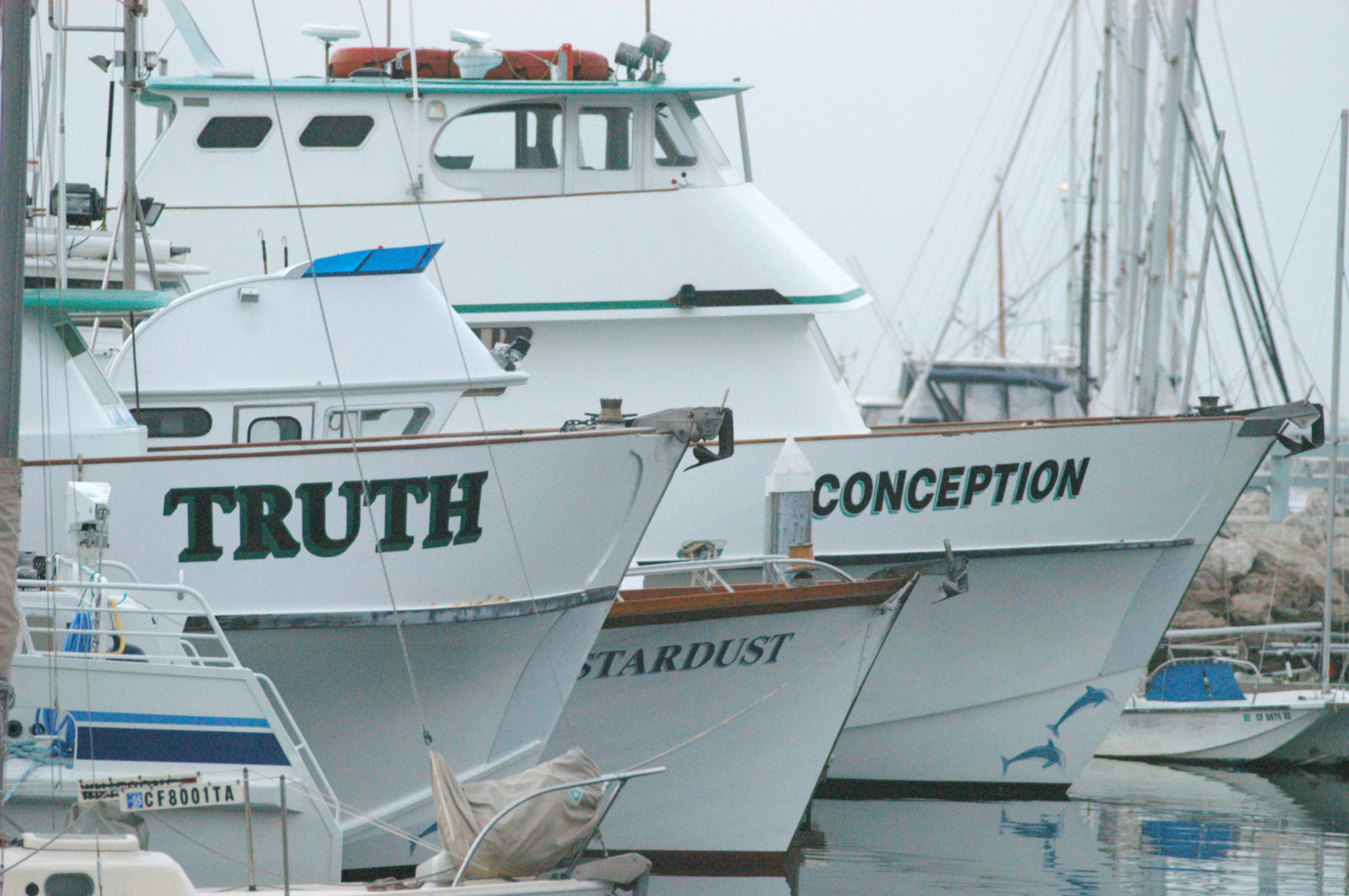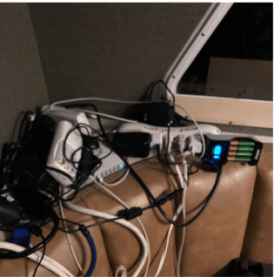Widow Sues Truth Aquatics Owners for Wrongful Death
Wife of Justin Dignam First Family Member to File Suit over ‘Conception’ Dive Boat Fire that Killed 34 in Santa Barbara Channel

More than two months after the deadliest tragedy in Santa Barbara history, the first family member of one of the 34 people killed in the Conception fire has filed a wrongful death lawsuit against the ship’s owners, Glen and Dana Fritzler, and their dive-boat company, Truth Aquatics.
John Hillsman of McGuinn, Hillsman & Palefsky Law Firm filed the lawsuit on behalf of Christine Dignam. Her husband, Justin Dignam, was sleeping onboard the Conception dive boat when it burst into flames in the early morning hours of September 2, killing him and 32 other passengers and one crew member sleeping aboard the ship. Only the five crew members sleeping on the sun deck, including the captain, escaped with their lives. Dignam was 58; he is survived by Christine and their two children, Taylor and Chandler Dignam.
Dignam’s lawsuit against Truth Aquatics is a countersuit. Just three days after the disastrous fire erupted, the Fritzlers filed a federal lawsuit under the Limitation of Liability Act of 1851, which says the owner of any ship can limit damage claims to the value of the ship’s remains if they can prove they had no knowledge of any dangerous flaws. In the case of the Conception, the wreck is said to have “zero residual value,” which would mean the victims’ families can receive no compensation.

“The CONCEPTION, prior to and at the inception of the voyage, was tight, staunch and seaworthy and fit for the intended [2019 Labor Day Weekend] trip,” the Fritzlers’ initial suit reads. “The Fire and all consequential alleged injuries, damages and deaths occurred without the privity or knowledge on the part of [the Fritzlers] and was not caused or contributed to by any negligence, fault or knowledge on the part of [the Fritzlers].”
Dignam’s counterclaim states that the fire was caused by the Fritzlers’ negligence, though.
The counterclaim says the ship’s electrical system was powered by diesel generators, which passengers were actively encouraged to use to charge devices such as “digital cameras, video-cameras, smartphones, cell phones, strobe lights, GoPros, laptop tablets, underwater-scooter power packs, and other battery-powered electronic equipment.” The suit describes the battery charging station, which is located in the galley where the fire reportedly began, as an octopus charger comprising multiple power strips.
Although the cause of the fire is still under investigation, many have speculated that lithium ion batteries charging may have sparked it. The suit says not only that the charging station was hazardous, but also that no crew were mandated to patrol the charging station should it catch fire.
Dignam’s suit also describes the below-deck passenger sleeping quarters, where Justin Dignam perished, as a “space deep down in the hull itself that had no portholes, skylights, or windows,” with no exit besides a narrow, overhead escape hatch into the galley. The vessel’s engine room, generator space, and fuel tanks were also situated in the hull, below the main deck, aft of the passenger accommodations, the suit says.

The boat’s dive station was also detailed as being unsafe. The station was located situated back on the fantail, behind the galley.
“Among other things, that station housed multiple high-pressure air compressors, one or more nitrox membrane systems, high-pressure piping, one or more banks of high-pressure, oxygen storage bottles, and thirty or more scuba bottles,” Dignam’s counterclaim states.
In addition to suing for wrongful death, Dignam is also seeking survival damages, funeral and cremation expenses, punitive damages, the cost of the suit, and any other relief the court deems just and proper.
The Conception was built to code and had passed all recent safety inspections at the time of the fire, prompting the question: How stringent are safety codes actually? After poring over 20 years’ worth of federal documents, the Los Angeles Times released a report with its answer: not very stringent at all.
Small passenger vessels have experienced fires for years, pushing the National Transportation Safety Board to repeatedly ask the U.S. Coast Guard — the only entity that mandates safety requirements — to improve fire safety standards on small vessels. Unfortunately, many of the requests were rejected because the Coast Guard called them “unnecessarily burdensome and duplicative of existing requirements.”
The main issues the NTSB found are what likely contributed to the Conception tragedy, though the investigation is still ongoing. The NTSB cited “electrical malfunction, a poorly maintained fuel line, and a failed cooling pump” as cause for many small vessel fires over the past two decades.
Families of the remaining 33 Conception fire victims have six months to file counterclaims against the Fritzlers’ zero liability suit from the time they receive notice; the original suit was filed September 5.




You must be logged in to post a comment.